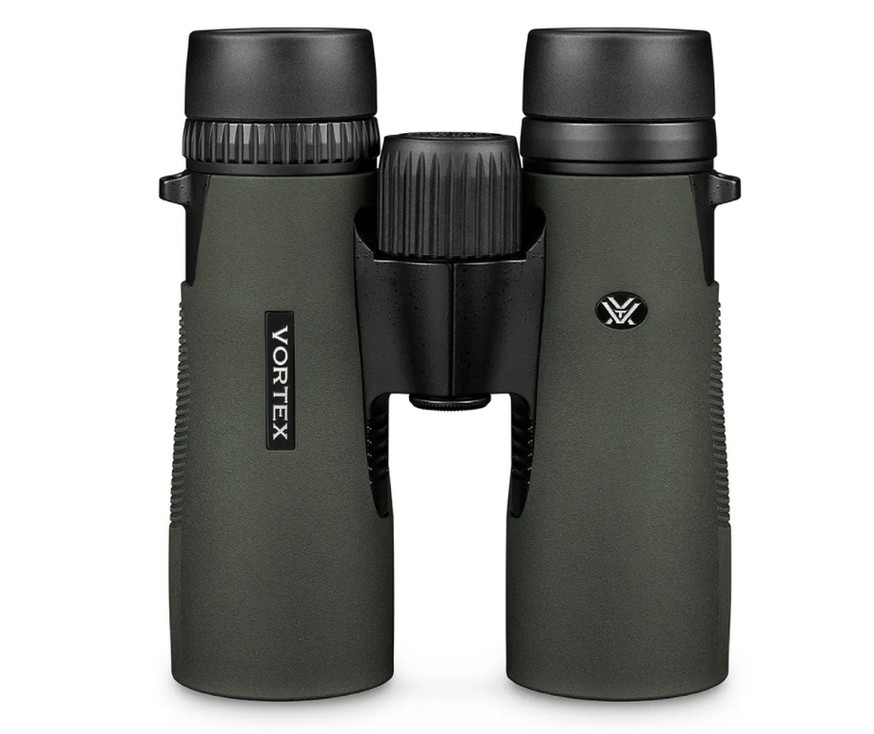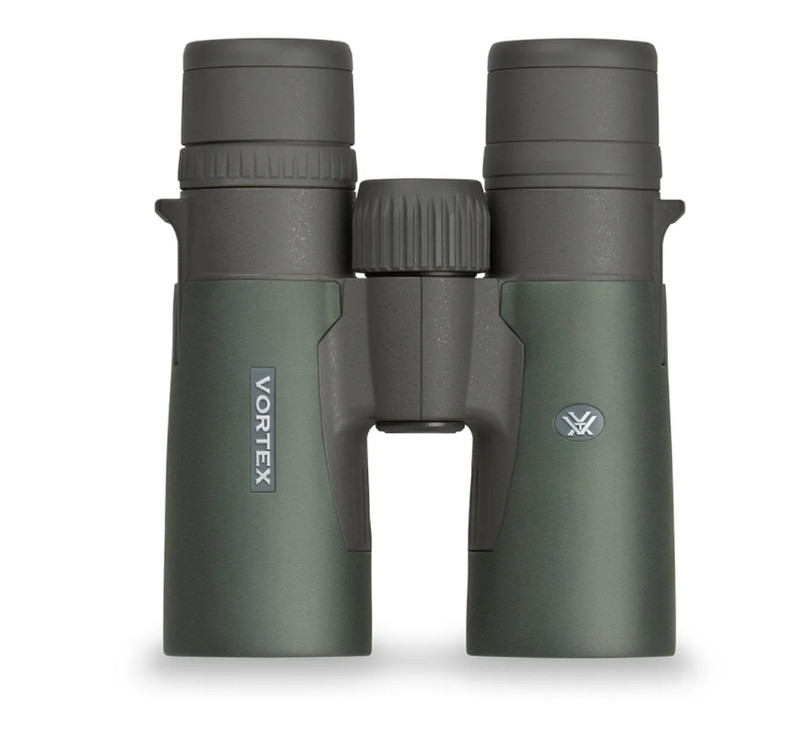Choosing the right pair of binoculars is crucial for any birder, whether you're just starting out or you've been chasing elusive species for years. With so many models available, finding the perfect balance between performance, features, and price can be challenging.
The Vortex range is well-regarded among birdwatchers for its reliability, optical quality, and exceptional customer service. A major selling point of Vortex optics is their unconditional VIP Warranty, which covers repairs or replacements in case of damage, no matter the cause—giving you peace of mind that your investment is protected for a lifetime. In this article, we’ll take an in-depth look at four popular models—Vortex Triumph 10x42, Vortex Diamondback 10x42, Vortex Viper 10x42, and Vortex Razor 10x42. We'll break down their technical specs, practical differences, and the pros and cons to help you find the binoculars that best suit your birding needs.
1. Technical Specifications
2. Practical Differences
Optical Quality:
Vortex Triumph: Good clarity for an entry-level binocular, suitable for casual birding. However, it lacks the high-quality coatings, HD glass, and ED glass found in the higher-end models. It also uses standard rubber armor and plastic/aluminum in its construction.
Vortex Diamondback: Offers a step up in brightness and sharpness with dielectric coatings, providing a more detailed view. It's versatile enough for most birding needs, offering good color accuracy and light transmission. The build includes a more robust aluminum frame and rubber armor for better durability.
Vortex Viper: Enhanced with XR™ coatings, HD glass, and ArmorTek® protection, the Viper delivers sharper images with better contrast and more natural color reproduction. It’s ideal for low-light birding at dawn or dusk. The magnesium chassis adds durability while keeping weight manageable, and it also features a locking diopter for easier focus adjustments.
Vortex Razor: The premium option, featuring XR™ Plus coatings, HD glass, and the highest clarity and resolution among these models. With ArmorTek® protection and a magnesium body, the Razor offers exceptional durability. It also features a locking diopter for precision and the most robust, weatherproof build of the four.
Field of View (FOV):
Vortex Triumph: A narrower field of view at 328 ft/1000 yds can make tracking fast-moving birds more challenging.
Vortex Diamondback: At 330 ft/1000 yds, it’s slightly wider, offering a good balance for both spotting and following birds.
Vortex Viper: Wider at 341 ft/1000 yds, making it easier to locate and track birds, particularly in dense environments.
Vortex Razor: The widest field of view at 362 ft/1000 yds among these models, offering the best performance for quickly spotting and following birds, especially in open landscapes.
Close Focus:
Vortex Triumph: Close focus distance of 16.4 ft is less suitable for observing birds or insects at close range.
Vortex Diamondback: Close focus of 5 ft makes it excellent for viewing small birds and butterflies nearby.
Vortex Viper: Close focus of 6.5 ft is good for close observations but not as tight as the Diamondback.
Vortex Razor: With a close focus of 6 ft, it offers a good balance between close-up detail and broader viewing, making it versatile for different birding needs.
Weight and Handling:
Vortex Triumph: The lightest option, making it easier to carry during long birding hikes, though it lacks ergonomic features and uses plastic/aluminum construction.
Vortex Diamondback: Lightweight and comfortable to use for extended periods, making it ideal for all-day birding, with a more durable aluminum frame.
Vortex Viper: Slightly heavier but with a more durable build, including magnesium for a solid feel and ArmorTek® for extra protection. The addition of a locking diopter makes focusing easier.
Vortex Razor: The heaviest of the four, but still manageable. Its magnesium build contributes to its solid, durable feel, while ArmorTek® and weatherproofing provide maximum protection. Despite its weight, it remains well-balanced for steady viewing.
3. Pros and Cons
Vortex Triumph 10x42:
Pros:
Most affordable, great for beginners or those on a budget.
Lightweight for ease of carrying.
Decent clarity for basic birdwatching needs.
Cons:
Limited field of view and close focus.
Lacks advanced coatings, HD glass, and ED glass, affecting low-light performance.
Less durable build with plastic/aluminum construction and no locking diopter.
Vortex Diamondback 10x42:
Pros:
Good balance of price and optical quality.
Dielectric coatings for brighter, sharper views.
Excellent close focus, great for small bird and insect observations.
Lightweight and portable with a more durable aluminum frame.
Cons:
Not as sharp or clear as the Viper or Razor, as it lacks HD glass.
Slightly narrower field of view compared to the Razor.
Mid-range durability compared to higher models with magnesium frames.
Vortex Viper 10x42:
Pros:
HD glass, XR™ coatings, and ArmorTek® provide superior sharpness and color accuracy.
Wider field of view makes tracking easier.
Excellent low-light performance.
Durable magnesium build with a locking diopter for precise adjustments.
Cons:
Higher price than Diamondback, though more affordable than the Razor.
Heavier, which may impact comfort over long periods.
Close focus isn’t as tight as the Diamondback.
Vortex Razor 10x42:
Pros:
Premium image quality with XR™ Plus coatings and HD glass.
Widest field of view, ideal for spotting and following birds.
Great low-light performance, perfect for dawn or dusk birding.
Robust magnesium build, ArmorTek® protection, and weatherproof for all conditions.
Locking diopter for precise focusing.
Cons:
The most expensive of the four.
Heavier than the other models, which might be a consideration for prolonged use.
Close focus is good but not significantly better than the Viper.
Recommendation for Birders
Beginners: The Vortex Triumph 10x42 offers a budget-friendly option that provides the essentials without advanced features, making it a good starter pair.
Intermediate Birders: The Vortex Diamondback 10x42 balances cost and performance, suitable for those seeking quality without a significant investment.
Advanced Birders: The Vortex Viper 10x42 is ideal for those who need superior optical quality and a wider field of view, perfect for varied birding conditions.
Professional Birders or Perfectionists: The Vortex Razor 10x42 is the best choice for those who want the highest possible performance and don’t mind investing in top-tier optics. Its premium build, magnesium frame, locking diopter, and ArmorTek® protection make it a great fit for serious birders and professional use.
The Birding Life is South Africa's preferred authorized retailer for Vortex Binoculars. Get yours from our online shop and take your birding to new levels of clarity!


















Comments